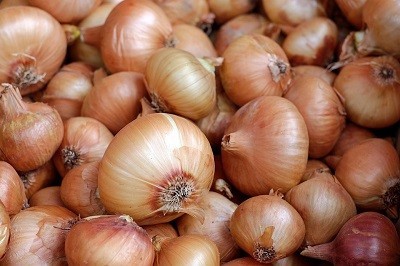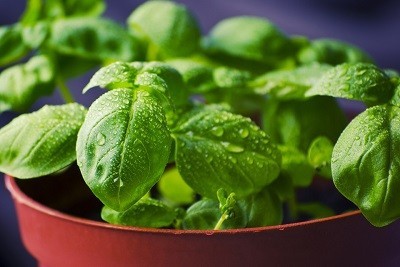If you are looking for the Zero Waste Lifestyle leben möchtest, solltest du auch Regrow food. Lebensmittel vermehren ist eine großartige Möglichkeit, Küchenabfälle sinnvoll wiederzuverwenden. Zudem kannst du dabei eine ganze Menge an Geld sparen. Vielleicht warst du sogar schon mal kurz davor, anzufangen, hast dann aber doch gezögert. Lebensmittel nachwachsen lassen ist jedoch meist viel unkomplizierter, als du es dir vielleicht zuerst vorstellst. In diesem Artikel lernst du, wie du ganz einfach Obst, Gemüse und andere Lebensmittel vermehren kannst.
Lebensmittel vermehren: Gemüse
Besonders beliebt zum Lebensmittel nachwachsen lassen ist Gemüse. Egal, ob Salat, Kartoffeln oder Möhren – Gemüse zu vermehren ist sehr einfach. Jetzt zeige ich dir jetzt, wie du verschiedene Gemüsesorten ganz unkompliziert nachwachsen lassen kannst.
1. lettuce multiply

Here's how you do it:
Behalte die Salatblätter, die du sonst in den Müll werfen würdest und lege sie in eine Schüssel mit ein wenig Wasser. Die Schüssel muss an einem warmen und sonnigen Ort stehen. Die Blätter solltest du hin und wieder ein bisschen anfeuchten. Nach einiger Zeit sollten an den Blätter wurzeln wachsen. Der Salat kann dann in einen Topf umgepflanzt werden. Sollte dein Kühlschrank mal zu voll sein, kannst du deinen Salat übrigens einfach in eine Schale mit Wasser stellen. Der Salat hält sich dort eine ganze Weile. Bei Römersalat kannst du die Wurzeln zum Wiederanpflanzen nutzen. Achte darauf, dass nur das untere Wurzelende im Wasser liegt. Salat ist ein tolles Beispiel dafür, dass Lebensmittel vermehren unkompliziert ist.
2. regrow onions

Da es sehr unkompliziert ist, eignen sich Zwiebeln gut zum Starten, wenn du Lebensmittel nachwachsen lassen möchtest.
Here's how you do it:
Schneide das Wurzelende mit circa 1 cm des Wurzelfleisches ab. Setzte die Wurzel in einen Topf und decke sie mit einer großen Schicht Erde zu. Die Erde sollte regelmäßig feucht gehalten werden. Sobald der Frühling kommt, kannst du die Zwiebel auch in den Garten pflanzen. TIPP: Falls du einen Garten hast empfehle ich dir außerdem den Artikel Bee pasture garden für ein bienenfreundliches zu Hause.
3. potatoes

Kartoffeln passen zu fast jedem Gericht und vermehren sich sehr gut. Durch den Anbau von Kartoffeln kannst du dir eine Menge an Küchenmüll sparen.
Here's how you do it:
Schneide die Kartoffel in kleine Stücke. Achte darauf, dass jedes Stück mindestens 1-2 Kartoffelaugen hat. Die Stücke sollten ungefähr fünf Zentimeter groß sein. Lasse die Kartoffelstücke für ein paar Tage bei Raumtemperatur trocknen, damit die Stückchen nicht faulen. Kartoffeln brauchen einen Boden mit möglichst vielen Nährstoffen. Wenn du einen Komposthaufen besitzt, kannst du ein wenig Kompost zur Erde hinzumischen. Beim Einpflanzen sollten die Kartoffelaugen unbedingt in Richtung Himmel zeigen. Pflanze die Kartoffelstücke mit einer Tiefe von etwa 20 Zentimetern ein. Schütte zunächst nur 10 Zentimeter Erde auf die Stücke drauf. Warte mit den anderen 10 Zentimetern Erde solange, bis die Kartoffeln Wurzeln geschlagen haben. Und jetzt viel Erfolg beim Lebensmittel nachwachsen lassen.
4. Süßkartoffeln nachwachsen lassen

Süßkartoffeln können mit der selben Art und Weise wie die gewöhnlichen Kartoffeln als Lebensmittel vermehrt werden. Schaue dazu einfach auf die Anleitung aus dem vorherigen Absatz. Sobald die Sprösslinge der Süßkartoffel anfangen, eine Höhe von etwa 60 Zentimetern zu erreichen, sollten die Süßkartoffeln umgepflanzt werden. Es dauert ungefähr vier Monate, bis die Süßkartoffeln ausgewachsen sind.
5. Karotten-Grün vermehren

Karotten können an sich nicht wieder nachwachsen, allerdings kannst du dich an einem nachwachsenden Karottengrün erfreuen.
Here's how you do it:
Um das Karottengrün vermehren zu können, schneide den Karottenkopf ab und gebe ihn in eine Schüssel mit Wasser. Nach ungefähr drei Tagen sollte das Karottengrün keimen. Nun ist es Zeit, die Pflanzen in einen Taopf umzupflanzen. In dem Topf wird das Grün bald Wurzeln schlagen. Karottengrün ist sehr gesund und kann beispielsweise für Salate und Smoothies can be used. Appropriately I recommend you the article Pflanzen & Kräuter zum selber anpflanzen.
6. ginger multiply

Ingwer ist nicht nur leicht zu vermehren, die Pflanze sieht auch sehr schön aus. Wenn du noch ein wenig Dekoration für deinen Balkon oder deinen Garten suchst, ist eine Ingwer-Pflanze definitiv empfehlenswert.
Here's how you do it:
Zum Anpflanzen benutzt du einfach einen Teil der Ingewer-Knolle. Ingwer mag zwar warme Erde, du solltest die Knolle jedoch nicht an einen zu sonnigen Platz pflanzen. Auch bei dem Ingwer solltest du die Erde schön feucht halten. Wenn es um das Thema Lebensmittel vermehren geht, ist Ingwer das bekannte Aushängeschild.
7. leeks multiply

Jeder weiß, wie gesund Lauch ist. Gerade im Frühling macht er sich hervorragend zu einer Gemüsepfanne.
Here's how you do it:
Nimm die Reste oberhalb der weißen Wurzeln und lege sie, genauso wie bei dem Salat, in eine Schüssel mit Wasser. Stelle die Schüssel auf eine sonnige Fensterbank. Innerhalb von ungefähr vier Tagen, solltest du neue Triebe sehen können. Schneide bei Bedarf die Pflanzen ab und lasse die Wurzeln einfach im Wasser stehen. Das Wasser solltest du einmal pro Woche erneuern, damit es schön frisch bleibt. Wusstest du, dass du ein Lebensmittel wie Lauch vermehren kannst? Ich wusste es bisher noch nicht, muss ich zugeben.
8. regrow pea shoots

Hast du noch einige Erbsen übrig? Dann kannst du Erbsensprossen nachwachsen lassen. Erbsensprossen sind gesund, enthalten viele wichtige Vitamine und sind total einfach zu vermehren.
Here's how you do it:
Gebe die Erbsen in ein Einmachglas. Gieße die dreifache Menge Wasser darüber und lasse die Erbsen eine Stunde darin stehen. Gieße das Wasser danach vorsichtig ab und spanne mit der Hilfe eines Gummis ein Stück Stoff über das Einmachglas. Die Erbsen sollten täglich abgewaschen und das Wasser gewechselt werden. Nach 5 Tagen kannst du die Sprossen ernten. Das Lebensmittel vermehren funktioniert übrigens auch mit anderen Sprossen.
Lebensmittel vermehren: Gewürze, Kräuter & Pilze
Auch Gewürze und Kräuter lassen sich sehr einfach als Lebensmittel vermehren. Da du sie einfach auf der Fensterbank nachwachsen lassen kannst, sind sie immer griffbereit. Im Folgenden zeige ich dir, wie du Gewürze und Kräuter vermehrst.
9. multiply garlic

Knoblauch sorgt vielleicht für einen unangenehmen Geruch, enthält dafür aber viel Kalzium. Damit ist das Gewürz vor allem für Vegan von großem Vorteil. Knoblauch kannst du sowohl in einem Topf, als auch in deinem Garten als Lebensmittel vermehren.
Here's how you do it:
Für das Wiederanpflanzen von Knoblauch benötigst du gerade mal eine Zehe. Genauso wie bei der Zwiebel, sollte die Erde warm und gleichzeitig feucht gehalten werden. Die Zehe kannst du ganz einfach in deinen Garten oder in einen Topf pflanzen. Sobald der Knoblauch anfängt zu sprießen, kannst du ihn ein wenig stutzen. Das regt die Bildung der Knolle an. Lebensmittel nachwachsen lassen, ist bei Knoblauch schnell und einfach gemacht!
10. lemon grass

Zitronengras vermehren funktioniert im Endeffekt sehr ähnlich, wie der Anbau von Lauch und Frühlingszwiebeln. Allerdings ist Zitronengras etwas pflegebedürftiger.
Here's how you do it:
Das erste Ziehen der neuen Triebe wird in etwa eine Woche dauern. Sobald die ersten Triebe zu sehen sind, pflanze sie in einen Topf um. Das Zitronengras solltest du erst abschneiden, sobald es eine Länge von etwa 30 Zentimeter erreicht hat. Nun kannst du das Zitronengras immer dann abschneiden, wenn du es gerade benötigst. Es wächst dann innerhalb kurzer Zeit immer wieder nach. Lebensmittel nachwachsen lassen kann so einfach sein!
11. Kräuter nachwachsen lassen

Kräuter sind perfekt geeignet, um sie als Lebensmittel nachwachsen zu lassen. Sie wachsen sehr schnell nach und halten sich sehr gut auf der Küchenfensterbank.
Here's how you do it:
Um Kräuter als Lebensmittel vermehren zu können, benötigst du übrig gebliebene Stängel. Schneide die Stängel hierfür mit einem scharfen Messer (nicht mit einer Schere!) knapp an der Stelle ab, an der die Blätter herausragen. Entferne die Blätter entlang des Stängels. Stelle den Stängel in ein Glas mit Wasser und warte einige Tage ab. Wenn die Wurzel ungefähr fünf Zentimeter lang ist, kannst du die Kräuter umpflanzen.
12. multiply mushrooms

Pilze vermehren ist etwas komplizierter als bei anderen Lebensmitteln. Eine Prise Glück gehört ebenfalls zur Rezeptur dazu.
Here's how you do it:
Pilzsporen mögen warme Feuchtigkeit und einen Boden mit vielen Nährstoffen. Das Düngen mit Kaffeesatz kann einen kleinen Vorteil bringen. Da sich die Pilze im Garten mit anderen Pilzsorten konkurrieren, könnte das Einpflanzen in einem Topf ebenfalls von Vorteil sein. Der nicht zu feuchte Keller stellt dabei eine sehr gute Unterbringungsmöglichkeit dar. Stecke die „Füße“ des Champions dabei einfach in die Erde. Mit etwas Glück solltest du schon nach kurzer Zeit die ersten Resultate sehen.
Tipp: Nutze Kaffeesatz für die unterschiedlichsten Dinge bei dir zu Hause, anstatt ihn wegwerfen. Lasse dich im Artikel Coffee grounds applications in the home inspire.
Lebensmittel vermehren: Obst & Früchte
Wenn du Lebensmittel nachwachsen lassen willst, wirst du feststellen, dass Obst vermehren schwieriger und langfristiger ist als das Vermehren von Gemüse. Dennoch lohnt es sich auf jeden Fall! Wie du Obst und Früchte vermehren kannst, zeige ich dir jetzt.
13. pineapple regrowth

Eine Ananas anzubauen benötigt genügend Geduld und etwas Geschick. Bis eine Ananas komplett nachgewachsen ist, können bis zu vier Jahre vergehen. Allerdings ist die Ananas-Pflanze auch eine schöne Dekoration für die eigene Wohnung oder den Balkon.
Here's how you do it:
Um die Ananas zu vermehren, solltest du den „Kopf“ der Ananas vorsichtig abdrehen. Wenn du alles richtig gemacht hast, hältst du nun die Blätter der Ananas und einen Teil der Frucht in der Hand. Zupfe die unteren Blätter der Ananas vorsichtig ab und lasse sie für zwei oder drei Tage auf der Fensterbank trocknen. Wenn du die Ananas vorher mit Holzkohlepulver bestreichst, verhinderst du die Gefahr, dass sie anfängt zu schimmeln. Danach stellst du die Ananas in einen Becher mit Wasser und wartest, bis sich in etwa fünf Zentimeter lange Wurzeln gebildet haben. Nun kannst du die Pflanze in einen nicht zu kleinen Topf umpflanzen. Für die Anzucht verwendest du am besten eine spezielle Anzuchterde, Palmen-Erde oder ein Sandgemisch. Die Ananas ist ein wunderbares Beispiel für das Lebensmittel nachwachsen lassen.
14. regrow avocado

Ein tolles Experiment, auch für Kinder, ist das Züchten eines eigenen Avocado-Baumes. Gleichzeitig ist es zeitaufwendig, diese Lebensmittel nachwachsen zu lassen. Bei dem Avocado-Baum wird es allerdings etwas Geduld brauchen – denn bis er Früchte trägt vergehen etwa 5 – 13 Jahre.
Here's how you do it:
Nimm einen Avocadokern und wasche ihn gut ab. Stecke in den Kern vier Zahnstocher und hänge ihn über ein Glas mit Wasser. Achte dabei darauf, dass das breite Ende etwa ein Zentimeter im Wasser liegt. Das Glas solltest du an einen warmen Ort mit gefiltertem Sonnenlicht stellen. Innerhalb der nächsten Wochen wirst du sehen können, wie sich die Wurzeln und ein Stängel bilden. Sobald der Kern einen Trieb von etwa 15 Zentimetern hat, kürze ihn auf eine Länge von etwa 7 Zentimetern. Dadurch wird das Wachstum angeregt. Sobald der Stängel beblättert ist und die Wurzeln dick genug wirken, kannst du die Zahnstocher entfernen. Lege den Samen nun auf einen humusreichen Boden in einem Blumentopf. Avocados mögen feuchten Boden. Die Bewässerung sollte allerdings auch nicht zu stark sein. Wenn die Blätter deines Avocado-Baumes gelblich wirken, so ist die Bewässerung zu stark. Der Avocado-Baum sollte zudem möglichst viel Sonnenlicht bekommen. Sobald der Baum etwa 25 Zentimeter groß ist, kannst du ihn wieder auf die Hälfte kürzen, damit sich neue Triebe bilden.
15. propagate peaches & nectaries

Möchtest du Pfirsiche und Nektarien als Lebensmittel nachwachsen lassen? Das ist möglich, du benötigst nur etwas Geduld.
Here's how you do it:
Zuerst musst du die Kerne aus der Frucht entnehmen. Schon hier wird es etwas kniffelig. Denn viele Pfirsichsorten sind so gezüchtet, dass die aus dem Kern wachsende Pflanze mickrig und klein bleibt. Nur einige wenige Sorten sorgen für starken Nachwuchs. Das sind:
- Proskauer
- Kernechter from the foothills
- Naundorf corechter
Das Fruchtfleisch sollte von dir ganz entfernt werden und der Kern anschließend auf ein feuchtes Tuch gelegt werden. Die Kerne sollten dort über Nacht liegen bleiben. Danach öffnest du die Kerne vorsichtig mit einem Nussknacker. Lege die Samen wieder auf ein feuchtes Tuch und lege das Tuch mit den Samen in eine verschließbare Dose. Lagere die Samen nun für zwei bis drei Wochen bei einer Temperatur von etwa 20 Grad Celsius. Danach für ungefähr 3 Monate im Kühlschrank lagern. Sobald sich Keime bilden, kannst du den Samen einpflanzen. Die Tiefe sollte etwa eine Fingerkuppe betragen. Die Erde sollte feucht sein. Nach einem weiteren Monat sollte der Samen sich in einen Keimling verwandelt haben.
16. regrow cherries

Kirschen nachwachsen zu lassen lohnt sich gleich zwei mal. Denn Kirschen sind nicht nur leckere Früchte, sondern tragen auch schöne Blüten am Baum. Ein Kirschbaum macht jeden Garten zu einem bee friendly garden. It is best if you plant the seeds in the autumn time. At cold temperatures, the cherry pits germinate very quickly.
Here's how you do it:
Wasche die Kerne gut und entferne sämtliche Reste des Fruchtfleischs. Reibe die Kerne sanft an einer rauhen Oberfläche ab. Das dient der Keimung des Kerns. Lege den Kern, genauso wie bei den Pfirsichen auch, auf ein feuchtes Papier und in eine Dose. Die Dose stellst du an einen kühlen Ort. Sobald die Kerne anfangen zu keimen, kannst du sie direkt in den Garten pflanzen. Dabei gehst du vor, wie bei den Pfirsichen. Der Kirschbaum spendet nach etwa fünf Jahren die ersten Kirschen. Also ist hier etwas Geduld gefragt.
17. Äpfel vermehren

Wenn du Lebensmittel nachwachsen lassen willst, kommst du an Äpfeln nicht vorbei. Der Apfelbaum gilt als Klassiker unter den Obstbäumen und ist im deutschsprachigen Raum sehr beliebt. Der Vorteil an dem Baum ist, dass er sehr kälteresistent ist und ohne Probleme bei den niedrigsten Temperaturen überleben kann.
Here's how you do it:
Der Prozess ähnelt dem der Pfirsiche und Kirschen. Lege die Kerne zwischen zwei feuchte Tücher in eine Dose und lege diese in den Kühlschrank. Sobald die Kerne nach einigen Wochen gekeimt haben, kannst du die Keimlinge in einen Topf pflanzen mit einer Tiefe von einer Fingerkuppe. Die Keimlinge solltest du an einen warmen und vor allem hellen Ort stellen. Im Spätfrühling kannst du die Apfelbäume in den Garten umpflanzen.
18. pears

Fast genauso beliebt wie Äpfel sind Birnen. Birnen sind sehr einfach zu vermehren. Sie gehören zur Familie der Rosaceae, zu der auch Äpfel gehören. Birnenbäume werden bis zu 20 Metern groß. Achte also darauf, dass du für das Anpflanzen einen passenden Ort mit ausreichend Platz findest.
Here's how you do it:
Lege die Samen auf ein Baumwolltuch und lege das Tuch auf ein Glas mit Wasser. Nach einigen Wochen keimt der Samen und du kannst ihn in einen Topf einpflanzen. Sobald der Baum robust genug wirkt, kannst du ihn in den Garten pflanzen. Birnenbäume brauchen Wasser und viel Sonnenlicht. Der Birnbaum ist ein tolles Beispiel, wie du indirekt Lebensmittel nachwachsen lassen kannst.
19. Zitronen und anderen Zitrusfrüchte

Zitrusfrüchte nachwachsen zu lassen ist einfacher, als du vielleicht denkst.
Here's how you do it:
Die Kerne kannst du ganz einfach in einem Topf anpflanzen, in dem sie schnell größer werden. Dafür solltest du einen möglichst frischen Kern nehmen, den du mit einer Tiefe von etwa einem Zentimeter einpflanzt. Die Pflanzen brauchen viel Sonnenlicht, um wachsen zu können. Ein sonniges Fensterbrett eignet sich perfekt dafür. Mit Citric acid kannst du übrigens viele Haushalts- und Pflegeprodukte ersetzen. Lies dir dazu gerne den Artikel Citric acid applications by.
Growing food again - no problem!
Ich hoffe, die Tipps konnten dir weiterhelfen und dich dazu motivieren, mit dem Lebensmittel nachwachsen lassen bei dir zu Hause zu starten. Lebensmittel vermehren ist in den meisten Fällen total unkompliziert. Gerade Gemüse und Kräuter wachsen sehr schnell nach. Wenn du Lebensmittel nachwachsen lässt, kannst du außerdem jede Menge Geld sparen. Und manche Pflanzen dienen sogar als eine schöne Dekoration in der eigenen Wohnung oder im Garten.
Was für Erfahrungen hast du mit dem Thema Lebensmittel vermehren gemacht? Hast du Fragen oder Anregungen? Dann hinterlasse mir doch einen Kommentar unter diesem Beitrag.
Stay sustainable,

PS: In the article Preserving food for longer erhälst du Tipps, wie du deine Lebensmittel zuhause länger haltbar machen kannst. Viel Spaß beim Lesen!







Hello Tabea,
what exactly is the procedure for the bulb? How does the cotton cloth lie on the water glass?
Greetings Bonnie
Thanks for the article - I've already tried some of it, namely potatoes, onions and ginger. Worked like a charm. I get my food in top
BIO quality. They are extremely tasty and only noh free. "Plants & herbs to plant yourself" I've also read by the way. Will I try next 😉